




If anyone today were to launch a proposal like that of André Breton -who considered the best way of achieving the full realization of surrealism was to go out into the street and shoot at random-, I fear it would arouse similar outrage and would confirm an open secret: that ours is age of mellifluous ideas in the field of culture. But this age does at least have the virtue of allowing us to draw the line between the mellifluous and the radical. What is more -for every cloud has a silver lining-, it is also an age in which the union between art and terms like radicalism, intensity and critical thought has ceased to be the pleonasm which enables many of us to understand art and cultural practices in general and has become the prime object of our demands.
Going out into the street and shooting at random is a response to the need to invoke radicalism and intensity as the foundations of art. And it achieves this by recalling a number of episodes which are -or were once- linked to the pursuit of slightly nonconformist ideas.
Radicalism and the notions I have associated with it may, of course, be seen as somewhat problematical. But in any event, the problematical is no ally of political correctness, or even of political rhetoric steeped in social commitment; it is disliked by the inveterately fastidious and at odds with convention. And it was just such conventionalisms which were observed, and responded to, by Tristan Tzara and Hugo Ball in a small night club in Zurich: the Cabaret Voltaire. Tzara and Ball attempted, with much ado but little impact, to identify the factions: themselves on the one side, and opposite them all those who fail to think critically: "Today, with the help of our friends from France, Italy and Russia, we publish this little booklet to describe the activities of this cabaret whose aim is to recall that, beyond war and fatherlands, there are independent men who live for different ideals".
Dada's desire -one might almost say its need- to cultivate independent, critical thought, radical ideas with a keen sense of humour, resounds like a conscience. And a handful of episodes from 20th century culture provide a response to this resonance: Johnny Rotten's "ground down teeth", for instance, as remembered by Greil Marcus in the book Lipstick Traces, which had the virtue of being one of the first to reconstruct the history of certain affinities which are a secret to no one. These very affinities were constantly explored, and alluded to, by Malcolm McLaren and Jamie Reid, who repeated what they had seen the situationists do in Paris, or the New York Dolls in New York, sparking off repercussions they could not have foreseen. There is even a familiar ring about the arguments of Malcolm McLaren, who said that, compared to the reality of English society, there was nothing scandalous about the Sex Pistols.
Malcolm McLaren evoked the situationists as a memory he needed to revive. Thus a Sex Pistols concert resembled the screening in Paris of a film which showed absolutely nothing and left the audience feeling deeply insulted. And this same "nothingness" was reminiscent of Hugo Ball reciting a sound poem in the Cabaret Voltaire. And it was all rather like the outbreak of a revolution. And that's all: a resemblance to times when there are no rules, when everything remains to be done, and everything can be made fun of. This, perhaps, is the famous Utopia with no Utopian horizon: the lowering of responsibility to basement level.
In all probability the bid to reconstruct and update radicalism and intensity in art will involve highlighting affinities, turning up the volume of familiar noises, and bringing to the fore the faint rumble of certain significant events, and others that are less so. Going out into the street and shooting at random explores some of these affinities and a few personal phillias as well. Some were chosen because they stand out as moments of true intensity -easier to spot now, perhaps, precisely because they are farther off in time - which were witnessed by only a few, shut inside a café, or a cinema or, maybe, a basement. Others because they are related to the development of independent, critical ideas with a keen sense of humour. And still others because they hold nothing sacred, or act with brazen independence. And all of them because they implemented the maxim that extremes are what we think about and nuances what we discuss. This could well be a definition of radicalism or, to put it another way, the rejection of mediocrity and cowardly ideas. Since we're going to get it wrong, let's get it completely wrong.
Thus Going out into the street and shooting at random does not aim to be a tedious documentary process which puts everything back into its tranquil place in history and heaps still more tons of boredom on top of us. It is an attempt to revive a few fleeting moments of intensity, if only like a resounding conscience. Inviting us, needless to say, to return to the common ground of all subversion: the basement.
Surrounded as we are by mellifluous ideas and tedium, all this thoroughly familiar noise serves as a pressing reminder that something must be done because we have something to say. This is no longer a pleonasm, but a platitude, which, even so, is not respected, though for those who delight in making political judgements and classifying everything as either problematical or pro-regime, it may be evocative of a return to order or a sprinkling of liberalism. The examples, however, will be slightly odd: they are provided by Chip Lord, and Pau Riba, and a Rastafarian hacker, all of whom refute the tendency to make art and culture into something institutionalized from the very start, something ready to become history before it even exists, and who also stress that having something to say is more important than where you say it, or how you say it, or how appropriate it is.
with:

There is a Spanish translation (it just might be this one) of this book by Tristan Tzara, the co-founder, with Hugo Ball, of the Cabaret Voltaire and Dada in Zurich. Though published under a pseudonym, it was done by Paco Ferrer Lerín for Carlos Barral in the seventies.
Paco Ferrer Lerín is a poet and writer and a member of the Novísimos generation. After publishing several books of short stories and poems, he devoted himself to ornithology and recovering carrion-feeding birds in Upper Aragon. He has recently published a remarkable novel entitled Níquel (Nickel)
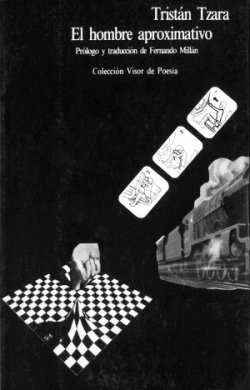
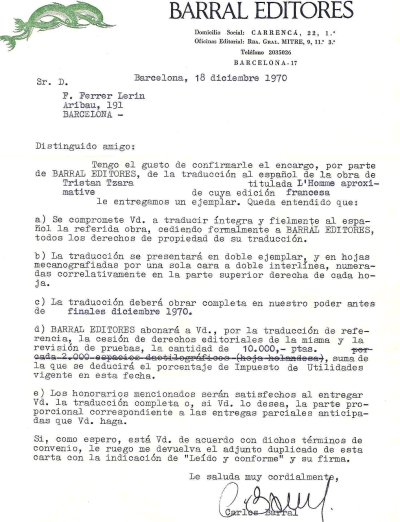
http://www.lib.uiowa.edu/dada/index.html
http://www.peak.org/%7Edadaist/English/Graphics/index.html
http://www.ferrerlerin.com

In 2000 Richard Hamilton revived his interest in reproducing the works of Marcel Duchamp, notably those related to La mariée mise à nu par ses célibataires, même, and he created a two-part map of the Grand Verre in cooperation with the MNAC and the Centre Georges Pompidou. One part referred to the bachelors' space and the other to the bride. In each he describes the operation of Duchamp's machine, including features foreseen in the preparatory notes to the Boîte Verte which -maybe out of sheer laziness?- never made it into the permanently unfinished version in the Philadelphia Museum of Art (which published the English version of the maps).
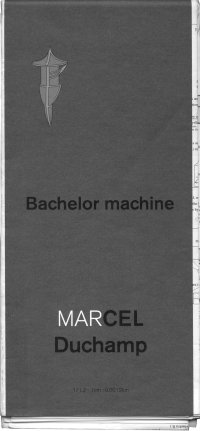
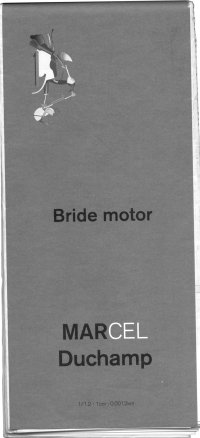
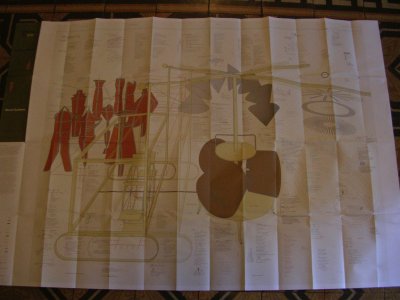
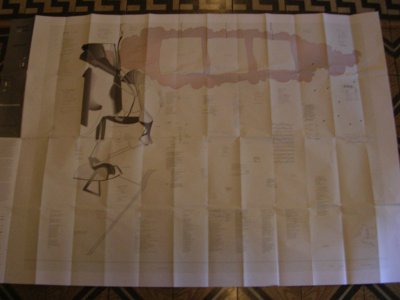
http://www.marcelduchamp.net
http://www.p22.com/projects/duchamp.html
http://www.aqualoop.com/aqua_sound/delia/Duchamp.html
http://www.toutfait.com
http://www.artscienceresearchlab.org/marcelduchamp1.php
http://www.freshwidow.com
http://www.philamuseum.org

All Yesterday's Parties -which harks back to, and modifies, the title of the famous song All Tomorrow's Parties, from the first Velvet Underground LP produced by Andy Warhol and The Factory in 1966, complete with the banana on the sleeve- is a collection of everything about the band that appeared in the press between 1966 and 1971, from reviews of their concerts to interviews. Editor Clinton Heylin recalls in the introduction that Velvet Underground was the first band to go beyond rock.


In 1972, Chip Lord and Doug Michels founded the Ant Farm group whose purpose was to hurl satire at the icons of American society. They did two projects in 1975: in The Eternal Frame they dressed up as the president and his wife to re-enact JFK's assassination in Dallas and visit the JFK Memorial Museum; and in Media Burn, Chip Lord celebrated 4 July by crashing a rocket-shaped Cadillac into a huge pile of television sets. Media Burn is a video summary of the day's media coverage and features a speech by the resuscitated JFK.
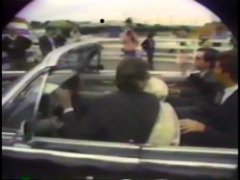

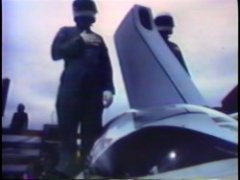
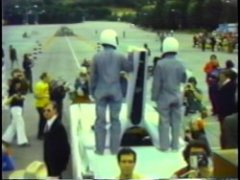




http://arts.ucsc.edu/faculty/Lord/

Pau Riba performed at the Canet Rock festival on 26 July 1975, after songs by Orquestra Plateria, Maria del Mar Bonet and Companyia Elèctrica Dharma. He came on stage in his underpants, probably after swallowing several acids because, as he himself remarked, "I don't know, the fact is I don't remember much about it".
The double LP Dioptria -the first edition of which came out in 1971- was re-issued in 1978. The double album contains some of Pau Riba's legendary numbers, including Noia de Porcellana (Porcelain Girl) and Ja s'ha mort la besàvia (Great-grandmother's died). It is an acid record, not only because of the drugs and its off-key tone, but because “it's a savage attack on the petit-bourgeois mentality and the Christian-progressive family seen as the basic cell of society” (Pau Riba's own words).
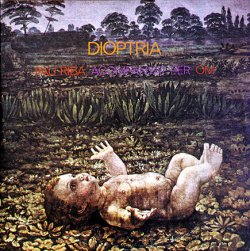
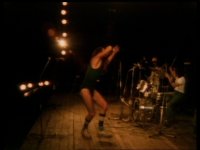
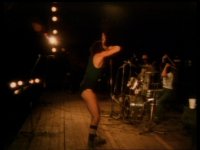
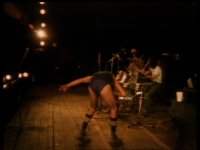
http://www.pauriba.com

After the Sex Pistols' disastrous American tour, during which Johnny Rotten quit the band after the San Francisco concert and set out for Jamaica in search of reggae while Sid Vicious remained (permanently) in New York with Nancy Spungen, the remnants of the group travelled to Brazil. There they recorded a theme with Ronnie Biggs, the famous Great Train Robber, who stole £2,600,000 and made his getaway, from prison and the UK, in 1965.
No One Is Innocent became the title of the Sex Pistols' last-but-one (?) album. And once again the poster and album were designed by Jamie Reid, who had been in Paris with Malcolm McLaren at the end of the seventies and who, with McLaren, Vivienne Westwood and Johnny Rotten, made up the core of the Sex Pistols.
Jamie Reid used to say that the illustration on the front of Never Mind The Bollocks was an attempt to make it as ugly as possible. It has recently appeared in some list or other as one of the best graphic designs of the 20th century.


Jello Biafra formed the Dead Kennedys in 1978 in San Francisco, a year after the Sex Pistols had given what was to be their last concert there. The Dead Kennedys' second album, Plastic Surgery Disasters, was issued in 1982. It bears a picture of the skeletal hand of a starving African child on top of a white hand.
A year later, while still a member of the hardcore band, Jello Biafra ran for the San Francisco municipal elections and came in fourth.

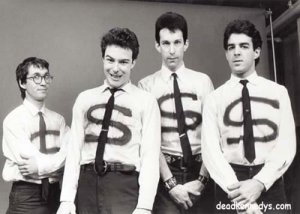
http://www.deadkennedys.com

Please Kill Me, by Legs McNeil (the editor of “Punk” magazine in New York in the 1970s) and Gillian McCain, is a collection of statements from interviews with the main figures of Punk, ranging from their forerunners in the late sixties and early seventies -Lou Reed and the members of Velvet Underground, Iggy Pop and the New York Dolls- to the Ramones, Johnny Rotten and Malcolm McLaren of the Sex Pistols.
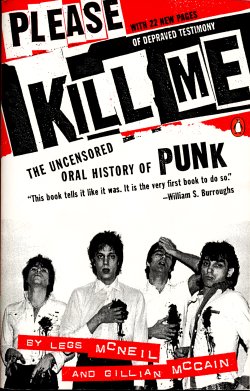

The name of the band -Sonic Youth- is in itself a statement of intentions: sound, rather than music, is what it's all about, and it must have a physical dimension. The first concerts by no-wave New York bands, such as Sonic Youth or S·W·A·N·S, sought to create a curtain of sound.
In 1992, Mike Kelley created all the artwork for the album Dirty.





http://www.sonicyouth.com

RanXerox first appeared in black and white in 1978 under the name RankXerox (until the electronics multinational objected to the comic strip's chief character). In 1980 colour albums began to come out about the gratuitous violence of the robot RanXerox, who is in love with the girl Lubna. In one of the Spanish-language editions there is a photograph of Liberatore and Tamburini in the company of Franz Zappa on the first page. After Tamburini's death, Liberatore concentrated on illustration. In 1993 he revived the character of RanXerox in one last story.
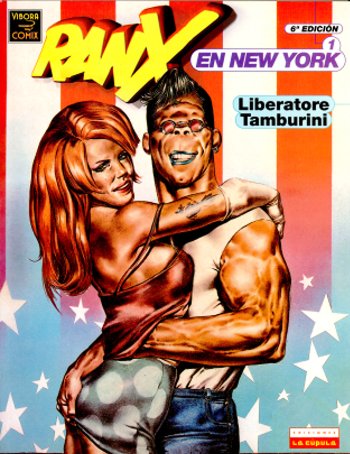
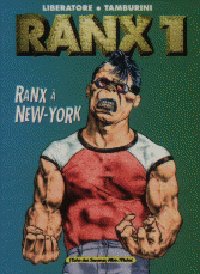
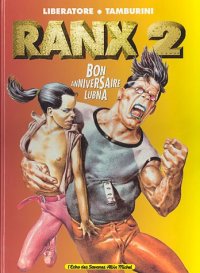
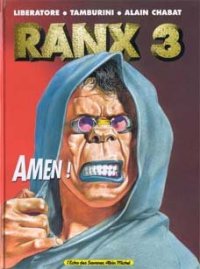
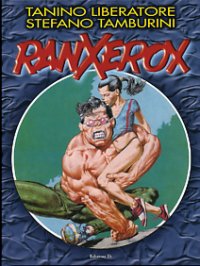
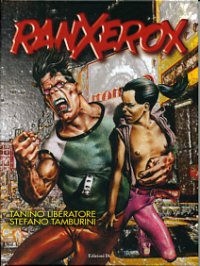
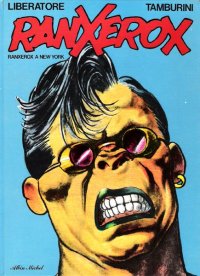
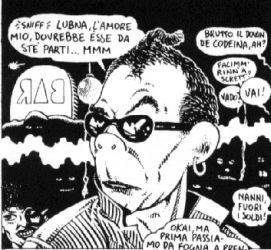

Dynebolic is a Live-CD distributed by GNU-Linux (in other words, it needs no installation but starts up directly from the CD when the computer is re-booted, and when the session is over, you re-boot without the CD and the original proprietary operating system returns). It is a complete operating system on an ordinary CD which is distributed free. Maintained by a community headed by Rasta hacker Jaromil, it was specially developed for media activists and artists and contains utilities for multimedia production.

http://www.dynebolic.org
http://www.dyne.org
http://rastasoft.org
http://www.linux.org
http://www.kernel.org
http://www.gnu.org
http://www.debian.org
http://www.ubuntulinux.org

Since 1994 Ignasi Aballí has been keeping dust in bags in order to reconstruct works as though they were tracks (footprints on the wall) or make pictures solely out of the dust left by the passing of time. The dust is similar to that which covered Duchamp's Grand Verre, which was “kept” in a warehouse and photographed by Man Ray in 1920. In Bartleby y compañía, Enrique Vila-Matas recalled writers who do not write because they are drawn by the negative impulse of nothingness. This same impulse moved Debord & Co. to present Hurlement en faveur de Sade, a film with no pictures and no sound, in 1952. The title of Ignasi Aballí's exhibition at the Museum of Fine Arts in Santander in 2004 was Nada para ver (Nothing to see) -different ways of doing nothing- and when Paco Ferrer Lerín launched his novel Níquel, he remarked that he is a writer who does not write (?).
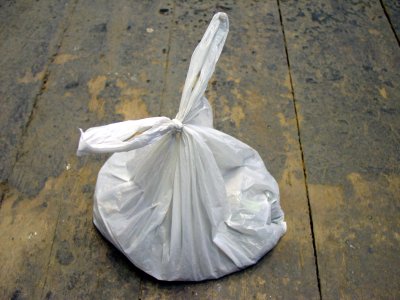
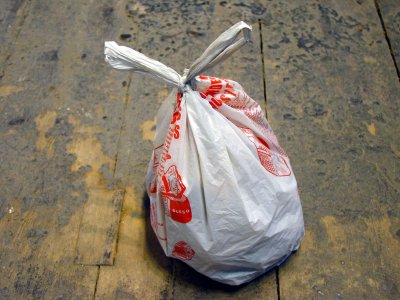

In 1999 Jens Hanning exchanged a fluorescent light tube from the Luther King Food Store, a Vietnamese shop in an Afro-American district in Houston, Texas, with an identical tube from the Overgaden exhibition space in Copenhagen. In an individual exhibition at Copenhagen's Nicolai Wallner gallery in 2002, he repeated the operation by swapping the fluorescent lights from a food store in Bangkok with those from gallery.
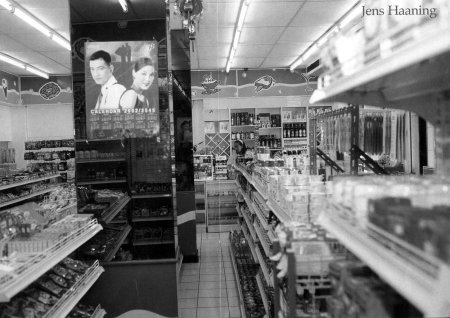
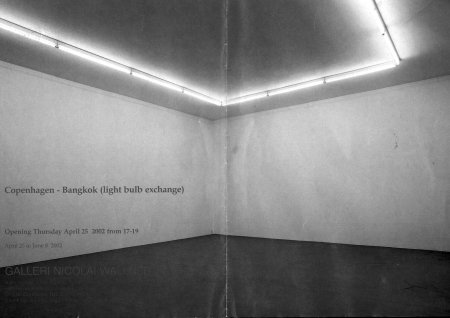
http://www.jenshaaning.com

1. In 1997 Antonio Ortega cooked a meal for some friends at which the main dish was Rufina's first egg. Rufina was a hen who lived with Antonio Ortega for a year, adapting to domestic behaviour alien to hens and becoming the object of Antonio's Ortega's artistic (?) experiments.
2. In Determinación de personaje, a critic and an artist, one tall and the other on the short side, literally do a remake of a sketch by the comic team Faemino and Cansado. The defining features of both characters is their physical appearance and each one's determination to be himself: short and tall, intelligent and stupid....
3. Antonio Ortega & The Contestants was an individual exhibition by Antonio Ortega in London which consisted in a joint exhibition with young graduates from the Faculty of Fine Arts in Barcelona.
4. Antonio Ortega's main project in 2004 focussed on Yola Berrocal. He built an office in Espai 13 to collect funds for a wax figure of Yola Berrocal. Later this office provided the walls and floor of his studio (the venue for the presentation of Going out into the street and shooting at random). The artists MoMu and NoEs developed all the promotional materials about Yola Berrocal
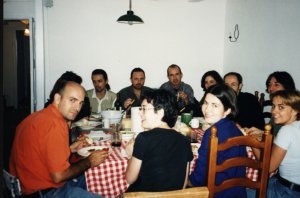
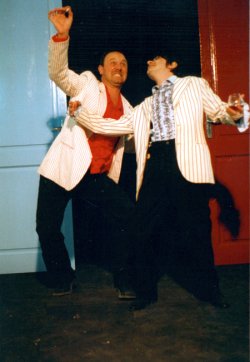
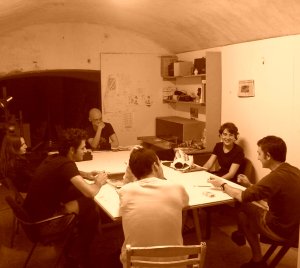

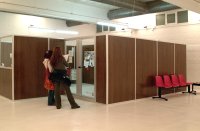
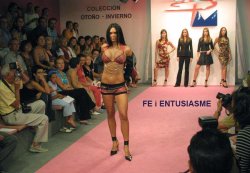
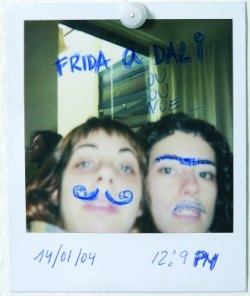

Rubén Martínez, who was one of the Contestants, is a member of Yproductions as well as an artist. He is also the dreadful, incorrect humorist of Chistes (Jokes):
“There's this homosexual who's walking down the street and he meets another homosexual and they say to each other: How're you doing, you crappy faggot? Fuck the shitty whore that made you such a fucking son of a bitch!
Then there's this black man who's walking down the street and he meets another black man and they say to each other: How're you doing, you crappy nigger? Fuck the shitty nigger whore who made you such a fucking son of a bitch!
And then there's this mentally retarded guy who's walking down the street and he meets another mentally retarded guy and they say to each other: How're you doing, you lump of shit? Fuck the shitty whore who made you such a fucking loony!"

El Perro, a group of artists from Madrid, has filled the streets of Madrid and Rome on two separate occasions with human-shaped targets, the same type of target as the police use for shooting practice. In Rome the police themselves confiscated all the targets for illegal advertising. And the El Perro group's targets were in fact advertising an exhibition of their work Lo importante es participar (It's taking part that matters): a shooting gallery where visitors can play at shooting at images of passers-by projected onto a screen.
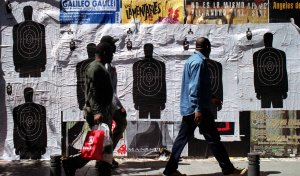
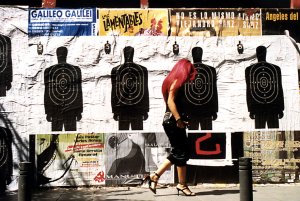
http://www.elperro.info

Guy Richards Smit used members of New York artistic circles as actors in the film Nausea 2 in which the story of a porn actress mingles with these same New York artistic circles. Nausea 2, a production in a seedy amateur porno and musical style, narrates a weird love affair between a pornographic actress and an artist.

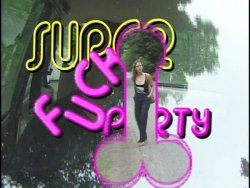
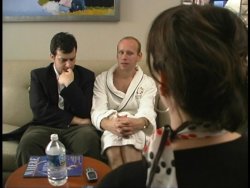
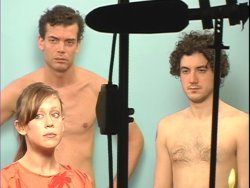
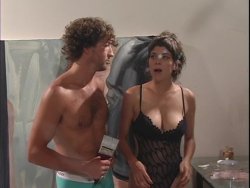
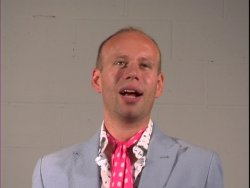

Anna Fasshauer modifies (tunes?) cars and then photographs them: she is capable of turning a Volvo into a flimsy cardboard limousine or painting a battered and abandoned wreck with the markings of a police car.
The car, notably the Mercedes, is an inescapable artistic reference. Bertrand Lavier's Mercedes Benz, 190 (1989), for instance, was entirely repainted and exhibited in 1998 as part of Artificial, while the Atelier van Lieshout's defence and vigilance unit is also a Mercedes, in this case a pickup with room for an enormous submachine gun.



Martí Anson is planning to steal Serge Lemoyne's picture Dryden (1975) from the Musée des Beaux-Arts de Montréal in May next year. First step, the Gang: Martí, David, Joan, Rafel, Alex and the girl, Natasha.
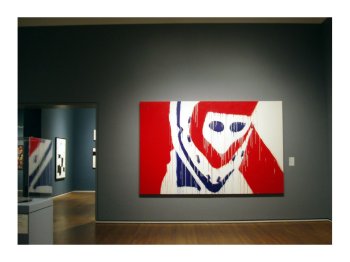
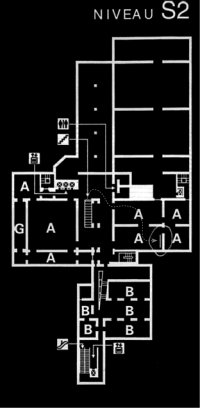
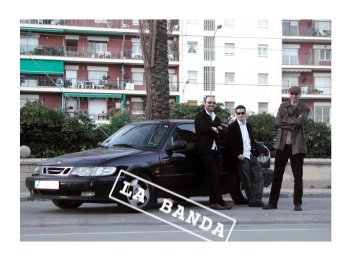
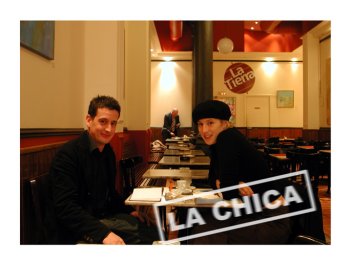

who gives the instructions about how to turn the poster into a magazine.
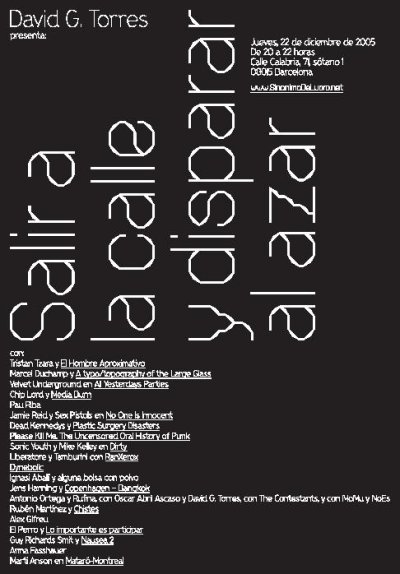
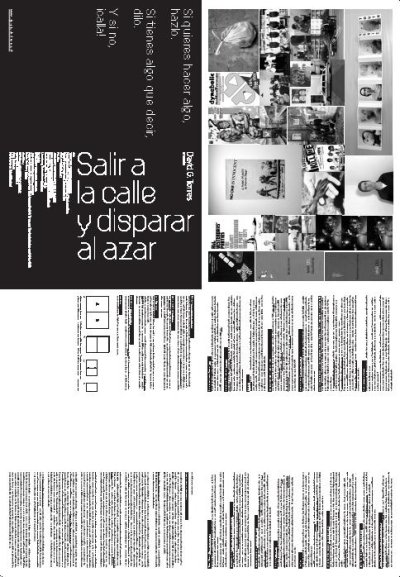

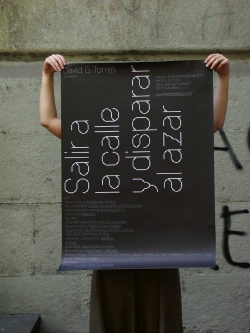
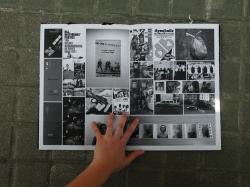
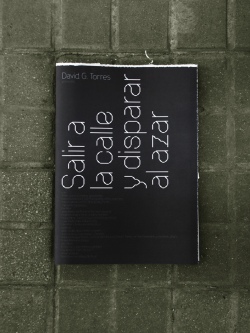
Poster/edition "Salir a la calle y disparar al azar" Barcelona LAUS DE PLATA 2006 Prize
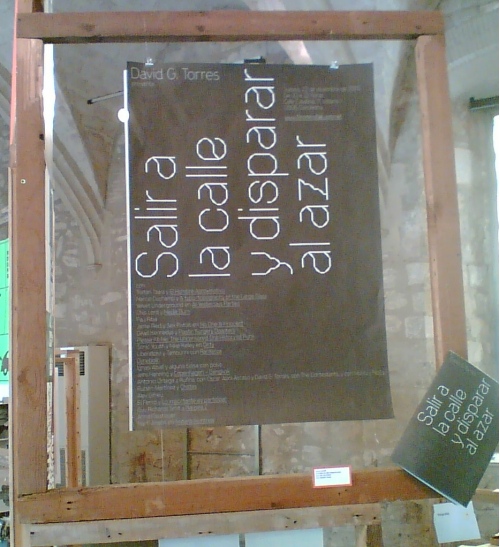
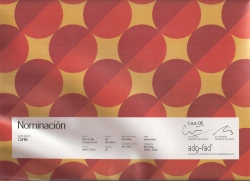
If you want to do something, do it.
If you've got something to say, say it.
And if not, shut up!
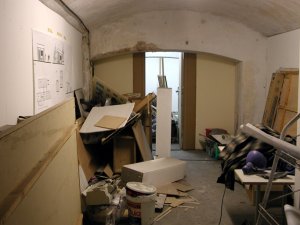

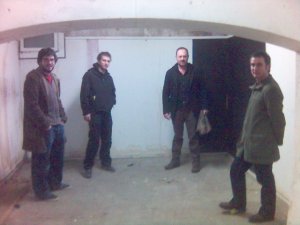
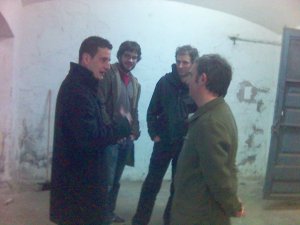
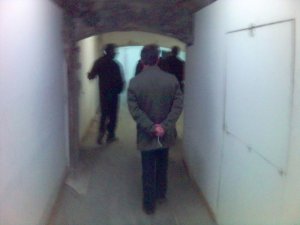
Isabel Salgado, Rafel G. Bianchi, Regina Giménez, Gloria Pou, Maribel López, Xavi Roca, Ester Martínez, Laura Santos, Javier Linares, David Armengol, Martí Manen, Alex Reynolds, Jaron Rowan and all who have participated in this and that are listed above.
Translation: Jacqueline Hall
